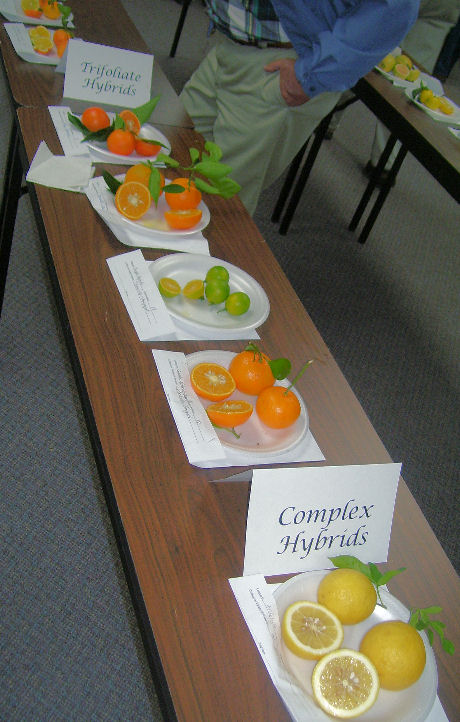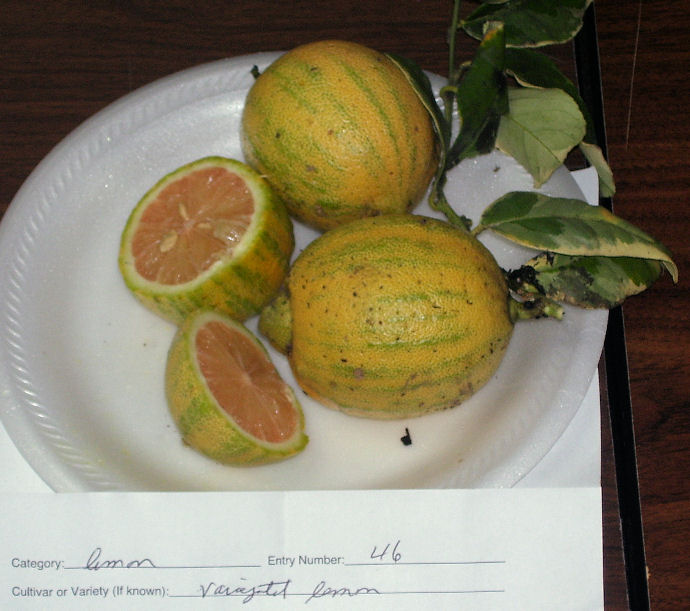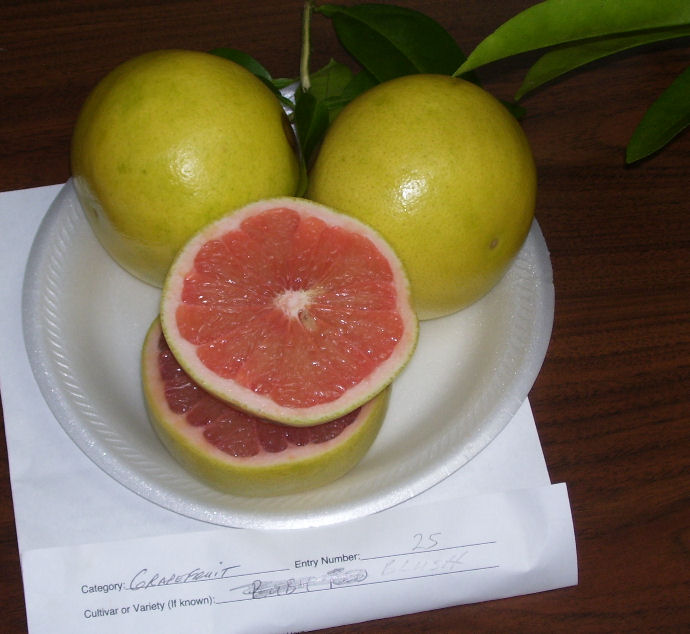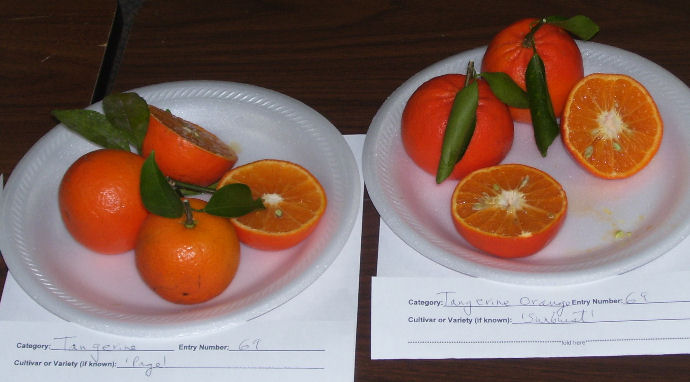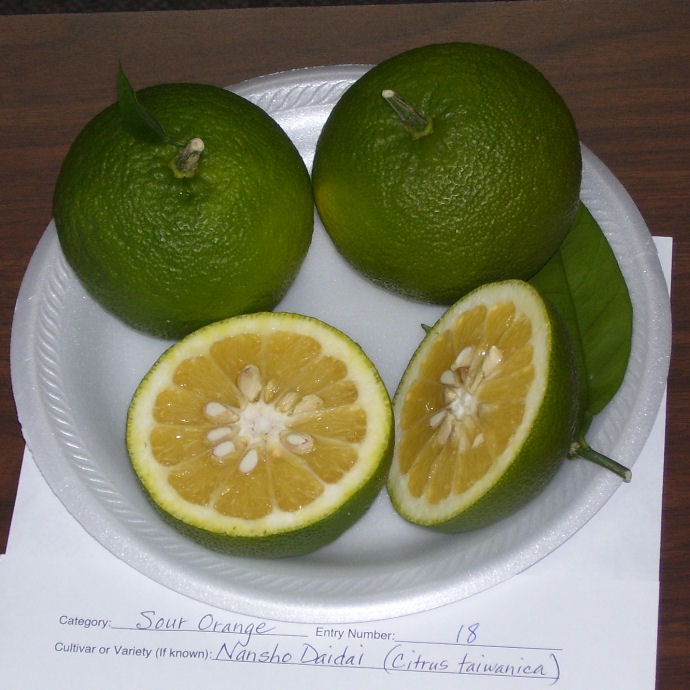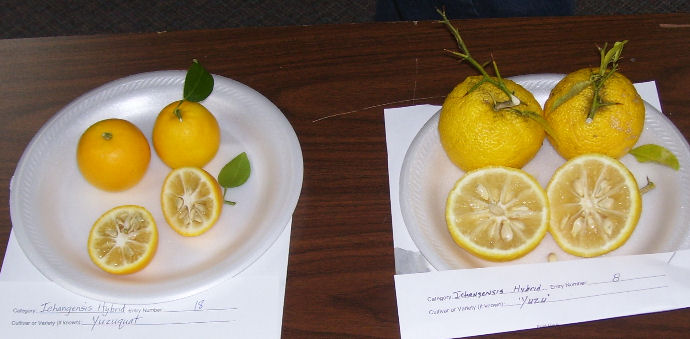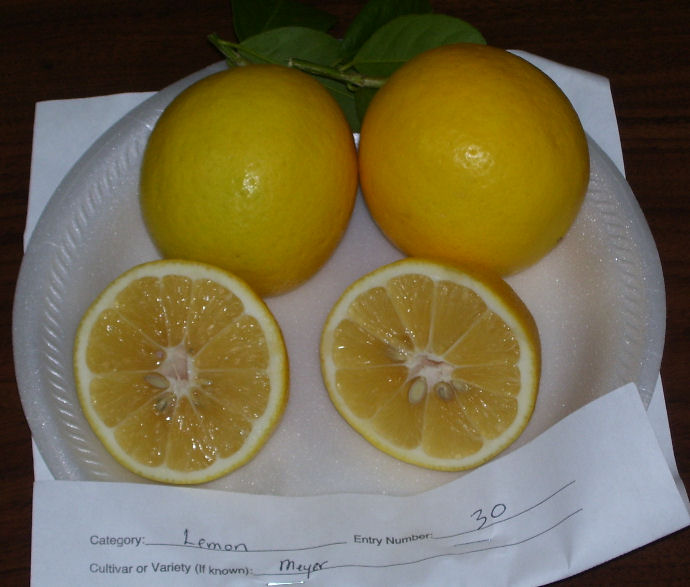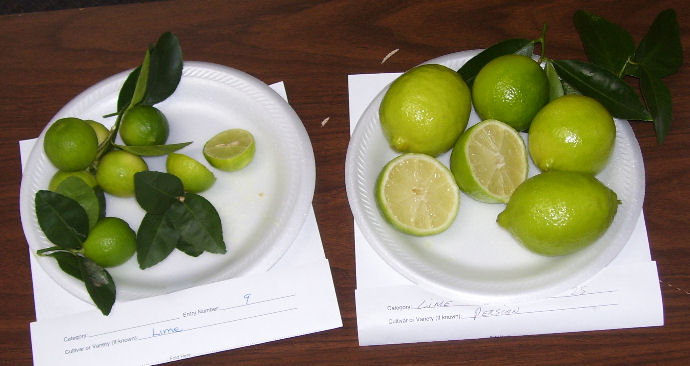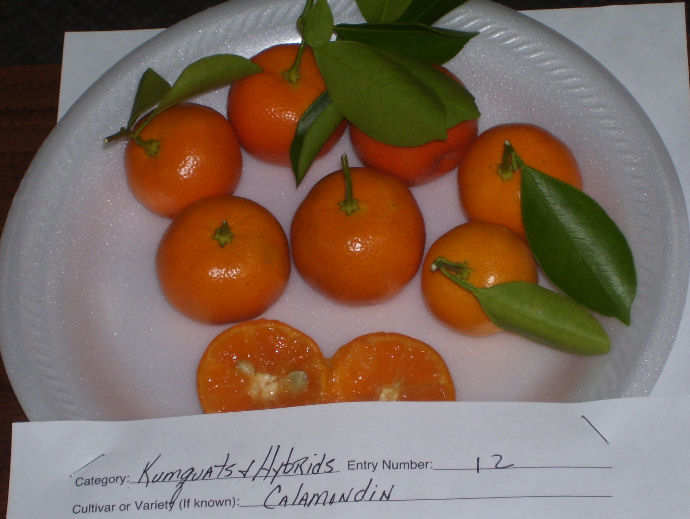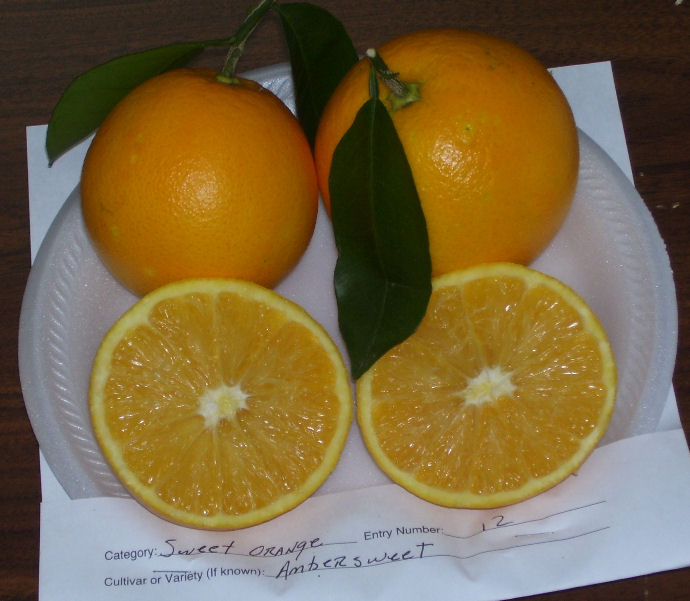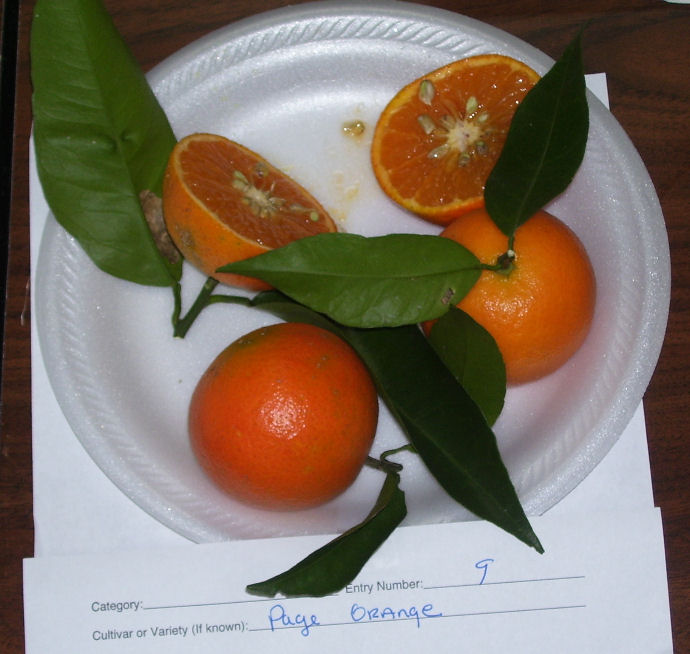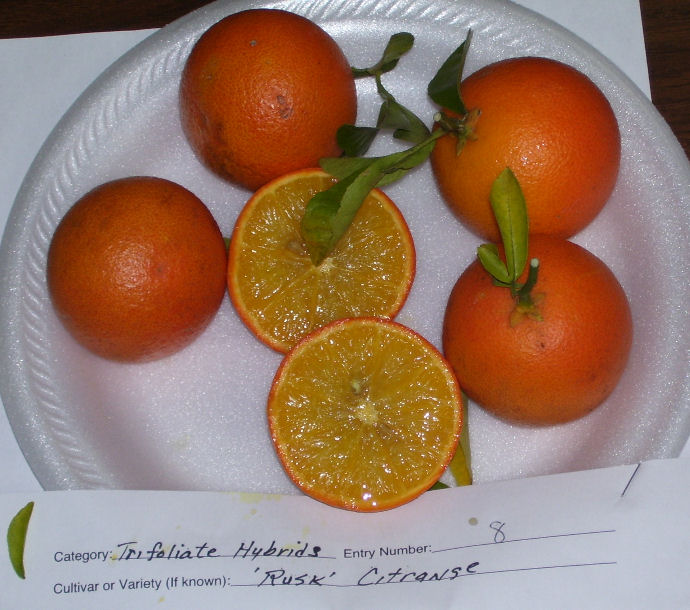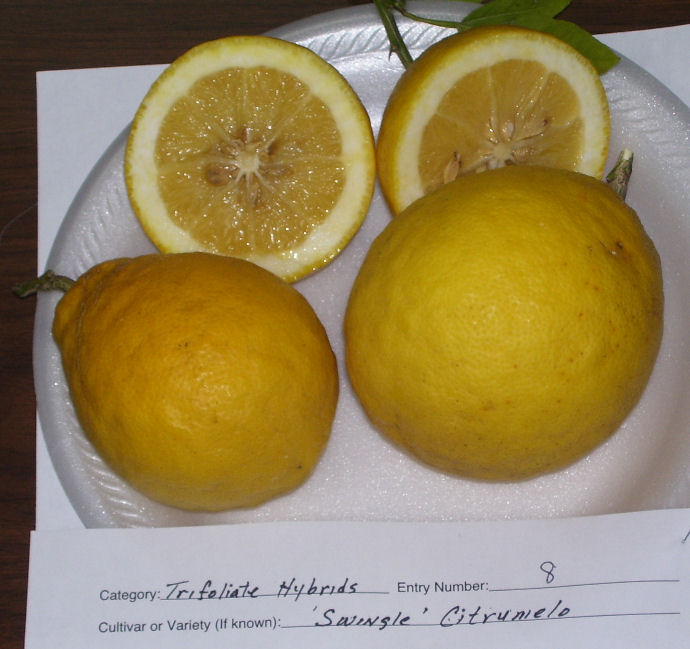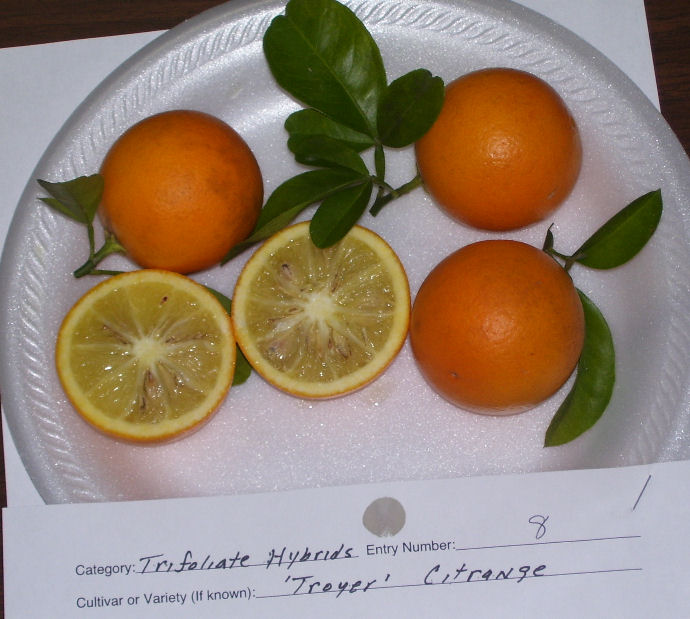I drank too much caffeine on the way home tonight so I'm working on the photos I took at the expo until I'm wound down enough to get to sleep. If there's anyone who objects to their fruit or face being shown let me know and I'll remove the photo.
The expo was held at the conference center at the University of Georgia Tifton experiment station. The first thing one saw once you got past the Jehovahs Witness convention in the front to drive around to the back where the expo was at was the plant sale in the parking lot.

I think I paid for Stan McKenzie's trip down with the stuff that I bought! He didn't quite get all of my money, but if I'd gotten there early enough to buy that olive tree he'd have gotten the rest of it!

There was a lot more than just citrus. Palm trees, a lot of nice cycads, pineapple guavas (feijoas), quite a lot of stuff that I did not recognize, and some really nice camellias. Here's a shot of the blossoms that were on display. I had to wrestle myself away from even looking closely at them or I'd have spent my supper money and had to go home hungry.

Once I was about broke from buying plants I was able to get inside to actually register for the conference! My camera did not do well in the auditorium so I wasn't able to get but one half-way decent shot later of the awards ceremony.
All of the speakers were informative and worth listening too. I got a better handle on why I'm having the trouble I'm having with my grove trees as a result. I wish I could say there were some good news on the citrus greening front, but there isn't. Eradication, even simple containment, of the asian citrus psyllid seems to be about hopeless so we are reduced to trying to find a way to coping with the disease as best we can. The one hopeful note is that it is now a multi-million dollar research effort towards that end. The salicylate experiments are showing some promise, but as of yet are still too far out to know for sure whether they're going to amount to anything. So for now we'll just have to soldier on until a way to cope is found or it finishes us off.
When the speakers were finished it was time for the fruit contest awards and the raffle drawing. This is my one halfway-decent photo from inside the auditorium as the awards were being given.
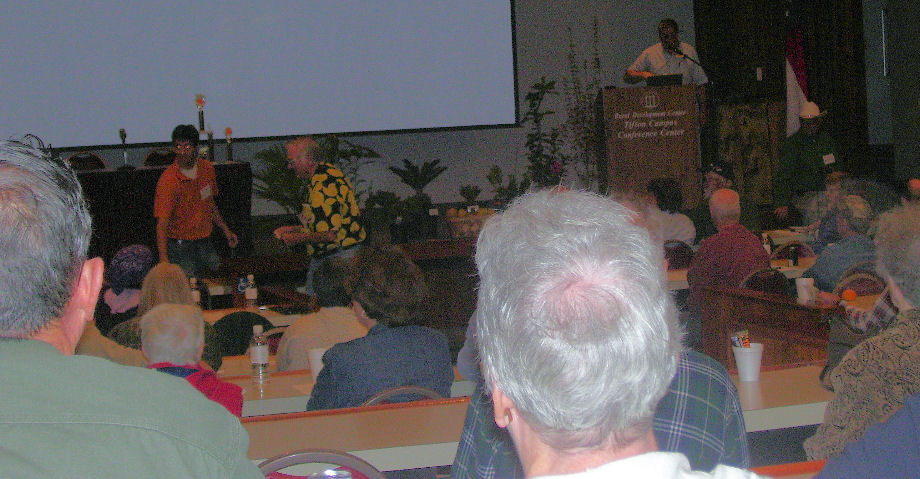
That citrus fruit shirt he's wearing really stands out doesn't it? The plants on the stage are for the raffle and the bit of the palm you can see him standing in front of was the first item drawn won by yours truly. If I recall right it's a European Fan Palm. It's also somewhat like carrying a porcupine...
Once the awards and the raffle were over it was time for lunch which gave me a chance to pick Monte Nesbitt's brain more about his work with satsumas in Alabama and the various cold resistance strategies they've employed. I have a terrible memory for names so I can't recall everyone that I spoke with today, but there were a lot of them! There was an amazing amount of knowledge walking around the place.
Lunch finished it was time for the walking tours. The first was with Dr. Wayne Hanna. He's the turf and forage grass specialist at Tifton, but he's taken an interest in cold hardy citrus and is trying to develop seedless varieties that can be grown in South Georgia. Here's a photo of us all out in the field near to the conference center where he's telling us about his experiments with Changsha tangerine and Ichang lemon. The conference center is the large building in the far background.

Behind him are his trees. The Changsha row on the left, the Ichang on the right.
He says the lemon have only just begun to bear so I was only able to find one fruit in a position that I could get a photo.

It's too soon to say if they are going to pan out, but it looks promising so far.
The Changsha he is further along with. As you can see the trees are loaded with fruit.
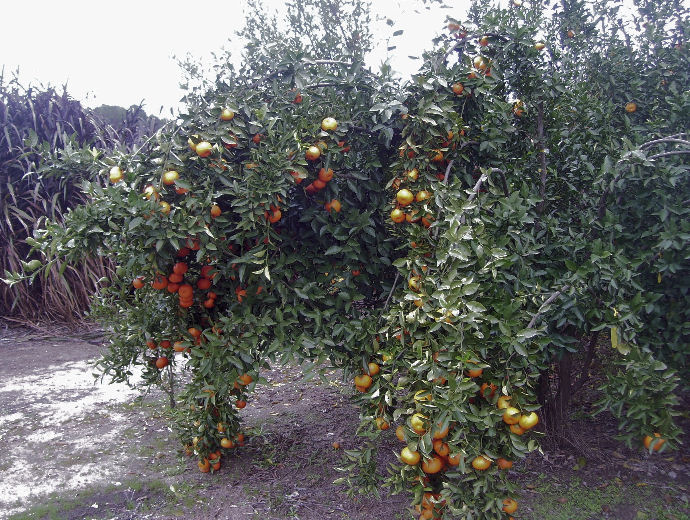
The lighting is a bit weird because the sky was starting to lighten a bit and I wasn't able to improve it more than that in the editing.
Here's a close up of the fruit on the branches:
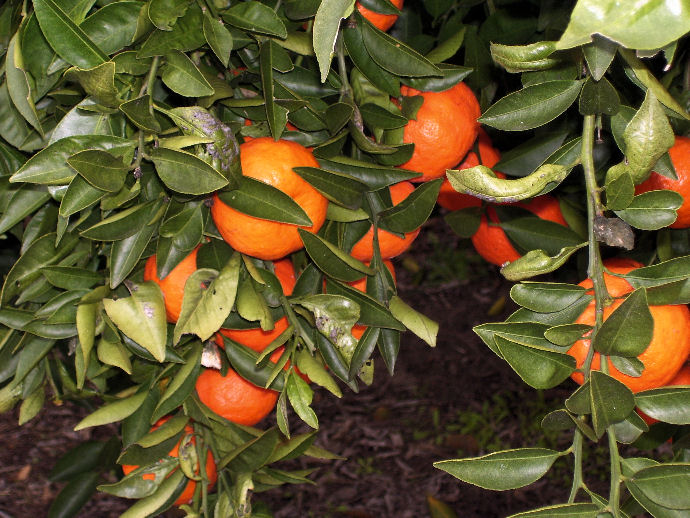
They had very nice color and most of them had nice external qualities.
But what he's working on is seedlessness so it's the inside that tells the story. Here are several of the fruit that he cut for us.

As you can see most of them have a fair amount of seeds, but you'll note the two in the lower left are seedless. He's still working on identifying the specific branches of specific trees in the row that are producing the seedless fruit and whether they'll continue to do it year after year, but it's looking very promising so far.
Of course no seeds is only part of the story. The fruit has to taste good as well and Dr. Hanna graciously allowe me to sample some of the seedless one that he cut when the presentation was over. It was surprisingly good. A decent Page or Ponkan would still be better in my opinion, but had I paid money for a sack of them at a fruit stand I'd have been pleased with what I got. If he's providing any cold protection for those trees I must have missed it. I can say they are all out in the open just several hundred yards from the conference center. If ever he is able to develop one that he's satisfied to release I'll be in the line to get one.
The second waling tour was Dr. Ruter's ornamentals work at the plots on the other side of the Interstate. The only photos I took of that area was the oil camellias he's working with. As they're not citrus I'll leave them out unless someone really wants to see them. He's working on quite a lot of different projects over there, many of which looked very nice. I'm not into ornamentals myself so I'll have to leave those to someone else to talk about.
I also took a number of photos of the fruit judging contest. I'll try to get the best of them up in the next day or two.
Next year's expo will be in Charleston, South Carolina which is too far to day trip for me so I suppose I'll have to get a room. It was well worth getting up at four in the morning to make the three hour drive through the rain for this one.
.....Alan.



































